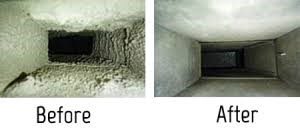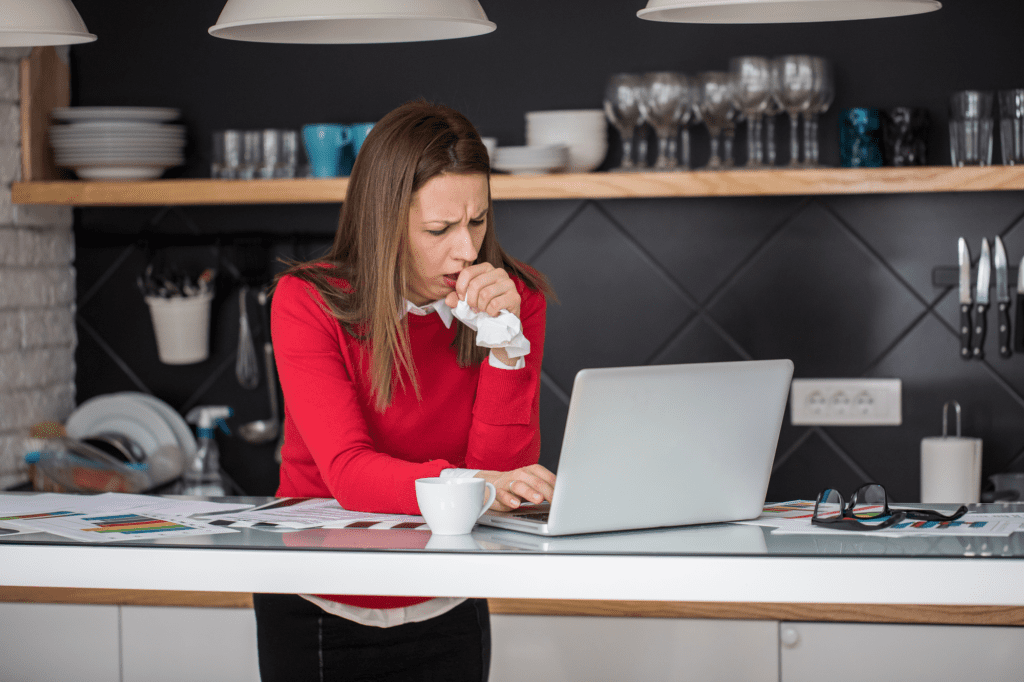There are over 50 million people in the U.S. who suffer from seasonal allergies. You don’t have to thank us in advance, but our experts have created a list of ways you can reduce the amount of allergens in your home. Learn how you can reduce sneezing, wheezing and coughing and make your home a haven from all those irritants outside!
Have Your Air Ducts (Not Ducks) Cleaned
Forced air HVAC systems use duct work to guide heated or cooled air to  various rooms throughout your home, so, naturally, it makes sense that when you turn your heating or cooling system on, allergens and airborne contaminants are also guided swiftly into your home. Over time, those particles build up inside your air ducts and the cycle repeats itself again and again and again. You get the picture. So, will duct cleaning help allergies?
various rooms throughout your home, so, naturally, it makes sense that when you turn your heating or cooling system on, allergens and airborne contaminants are also guided swiftly into your home. Over time, those particles build up inside your air ducts and the cycle repeats itself again and again and again. You get the picture. So, will duct cleaning help allergies?
Professional duct cleaning services use commercial grade duct cleaning equipment to thoroughly clean and remove the buildup of allergens like dust, debris and other contaminants from inside your air ducts. Sealants can also be used to prevent future buildup inside your air ducts. So, to answer the question, yes, air duct cleaning is the first and biggest solution to breathing better in your home.
Get an Indoor Air Quality Audit
An indoor air quality audit is not nearly as scary or painful as other audits. They take the guess work out of choosing the correct HVAC products or services to relieve your allergies and improve the air quality inside your home. How does it work? The air inside your home is collected and analyzed for 30 minutes using a state-of-the-art instrument. From there, a custom report is generated that explains the findings, levels of health concerns and provides recommended solutions that will improve your air quality. This report can help you make informed decisions about the health, comfort and safety of your indoor air.
Have a Whole-Home Humidifier Installed
Indoor air that has too much moisture creates a breeding ground for allergens, such as: mildew, mold, dust mites and bacteria, but not enough humidity can dry out and inflame the mucous membrane lining your respiratory tract, which increases your risk of colds, the flu and other infections. Flu viruses survive longer and spread more easily when humidity levels are low. The American Academy of Allergy, Asthma & Immunology recommends keeping indoor humidity below 50%. A whole-home humidifier with an automatic stat will ensure the humidity levels in your home are automatically adjusted.
Vacuum (Even Though You Don’t Want To) With A HEPA Filter
Using a vacuum cleaner with a HEPA filter will reduce dust, pet dander and other allergens. Remember, vacuuming temporarily stirs up dust that takes a couple of hours to settle back down, so your spaces may require an additional cleaning after all is said and done.
Don’t Spread Pollen Like A Bee
Buuzzz! During the height of pollen season, be sure to reduce the amount of pollen you’re tracking into your home from your shoes or clothes by either removing your shoes, brushing off your shoes and clothing before entering your home or changing into fresh clothing immediately after getting inside.
Keep Pets Groomed
No one likes a stinky pup, right? Well, your air doesn’t like ’em either! Get in the habit of grooming your pet outside your home to cut down on the amount of pet dander in the air. Additionally, wash your pet’s bedding regularly to but down on dander and allergens.
No One Likes Moldy Cheese…Or Bathrooms
To ensure proper cleanliness and to reduce mold growth in your home, scrub bathrooms, basements and other tiled areas with impactful cleansers to cut down on the potential for mold to grow.
You Can Trust Us
For the 50 million seasonal allergy sufferers in the U.S., we hope you’ve found these tips helpful. Please be sure to call us with any questions you have about the services and methods that can help you breathe better in your home.


 To Repair Or To Replace?…That Is The Question
To Repair Or To Replace?…That Is The Question